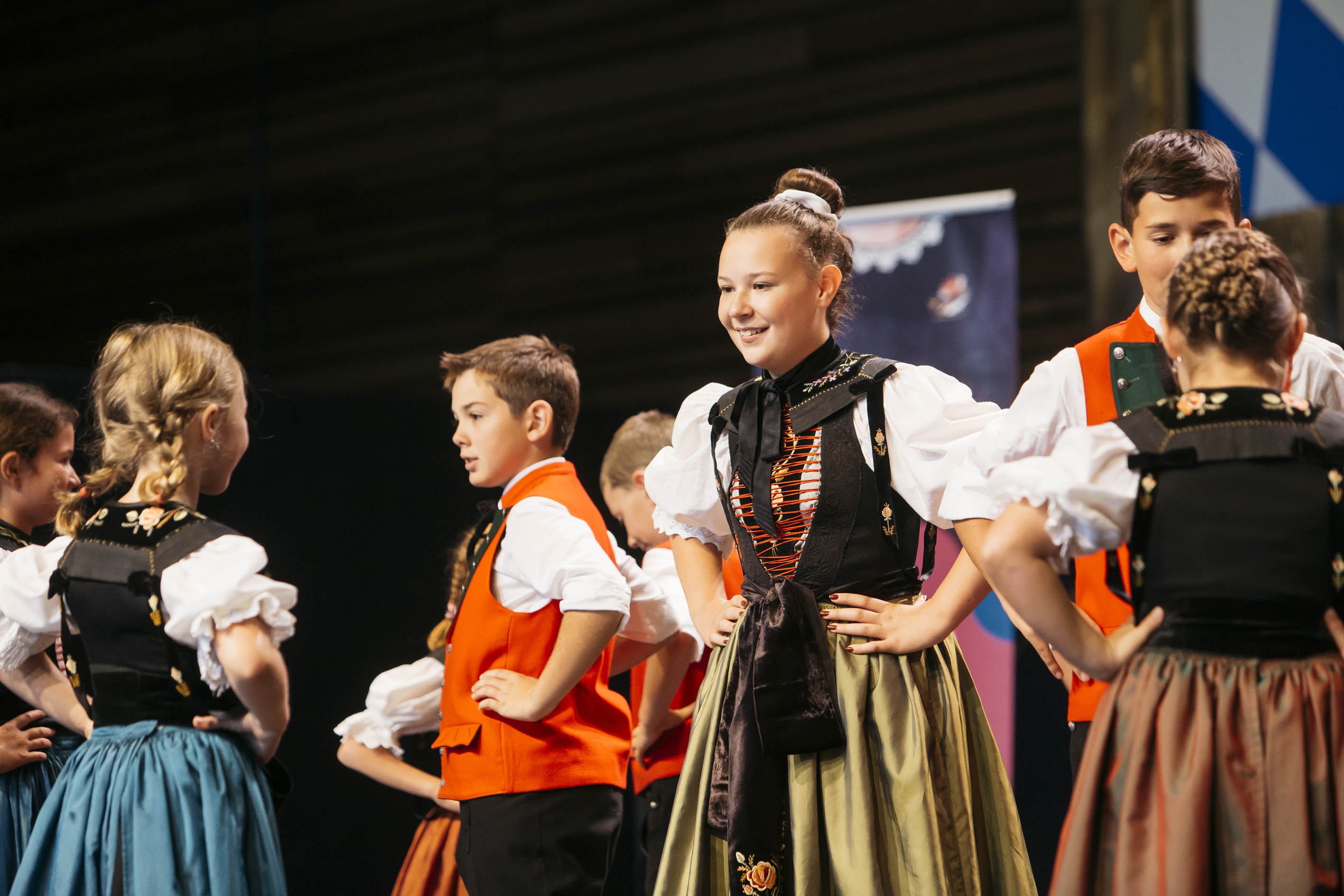Production and wearing of the Montafon traditional costume
The Montafon ‘Schäppele’, a small crown composed of silver and gold, crimped metal threads, and small metal flowers as well as the Montafon ‘Mäßle’ are distinctive features of the Montafon traditional costume. The typical fabric and colour scheme, motifs, production method, and materials used are determined by the region. The embroidery embellishing the garments is hand-finished using silk and cotton on black velvet, which takes skilled needleworkers around 500 hours to complete.
The prototypes and patterns for the costume date back to the early 19th century, but its roots go much further back. Over the years, individual elements of the Montafon traditional costume have experienced changes in colour and shape, but the overall style that is typical of the region has been preserved.
The Montafon traditional costume is integral to the local population and is worn to numerous festivities and on various holidays throughout the year. The wearer may make slight changes to individual parts depending on their personal taste. This is evident in the unaltered individual elements that have made up the costume for at least two hundred years: ’Juppa’ (black dress), underbodice, fichu, ’Briesnöstel’ (zigzag ties), apron, apron ties, collar, bow ribbons, petticoat, ’Schlutta’ (jacket made of brocade or wool, with white lace in the collar), ’Glöggletschopa’ (robe with a red or green lined pleated ruffle at the back hem), Montafon coat, scarf, ’Mäßli’ (cylindrical headpiece), ’Sanderhut’ (black straw hat) or fur cap, shoes, stockings, and neck bow (festive costume for women) or alternatively Juppa, skirt, petticoat, blouse, apron, and scarf, Montafon jacket, cardigan, scarf, shoes, and stockings (women's everyday costume).
Women acquire this traditional costume, which is meticulously crafted from natural materials, once in a lifetime. It is then gradually adapted to suit their age and is usually worn for the rest of their days. Children's traditional costumes are handed down within families, as well as within traditional costume associations and neighbourhoods, to those children whom the garments currently fit.
Traditional costumes are often passed on within the family and by local costume associations, which transmit the knowledge and skills required to make traditional Montafon costumes. The associations also play an important role in safeguarding this tradition, as the knowledge of the necessary craft techniques is shared among the members and passed on to others in courses.
Downloads
- Application form (in German only) 4 MB (pdf)
- Expertise Anwander (in German only) 5 MB (pdf)
- Expertise Tschofen (in German only) 110 KB (pdf)

